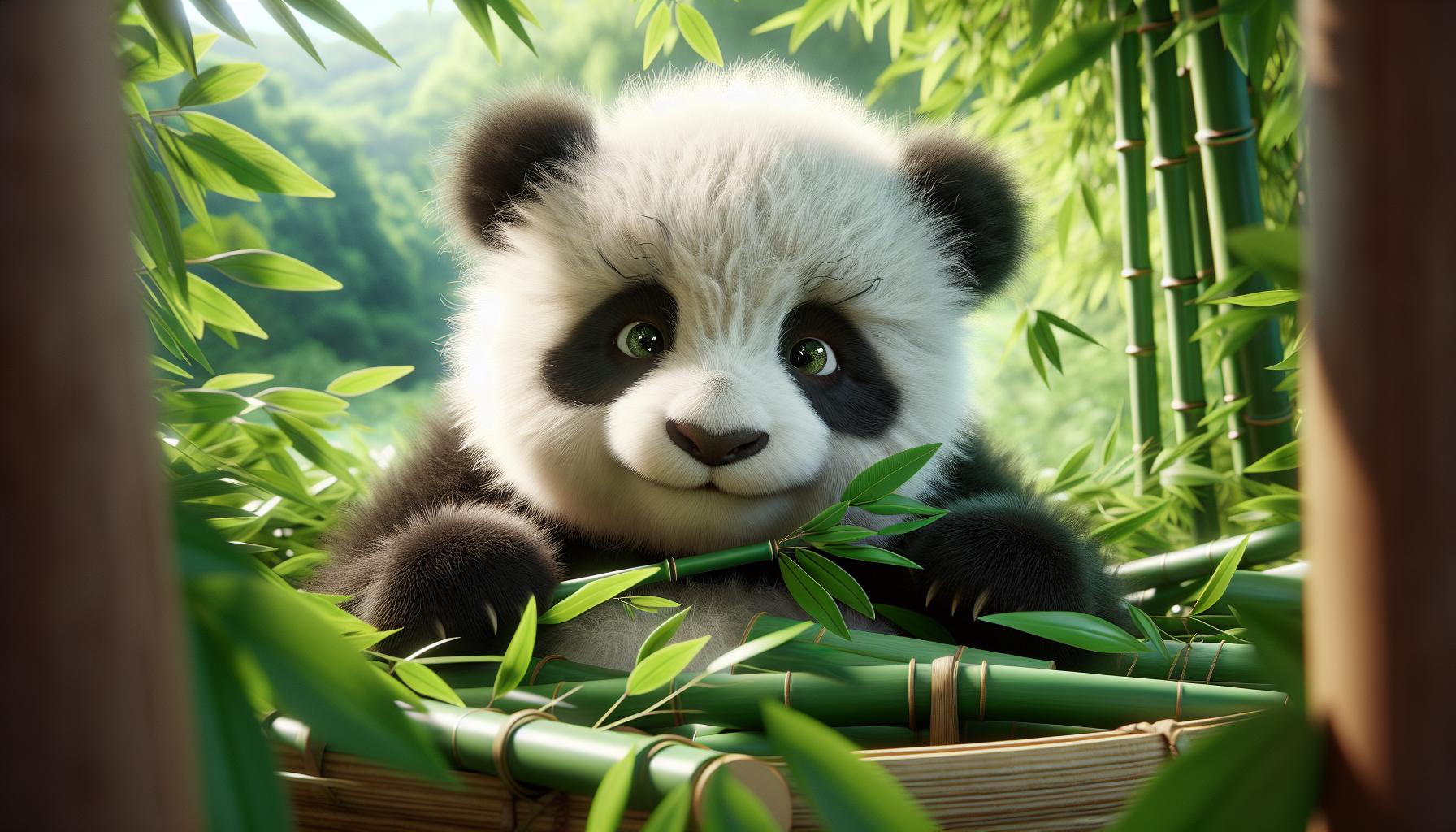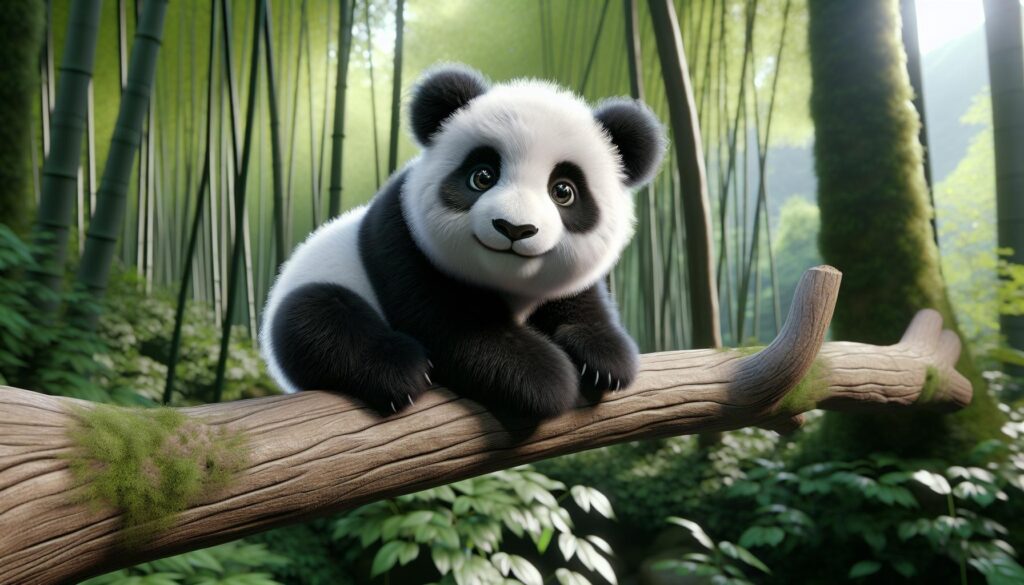When I think of adorable creatures, Baby:Fspvwn6do6c= Panda instantly come to mind. These fluffy bundles of joy capture hearts with their playful antics and endearing looks. But there’s more to these little ones than just their cuteness. Understanding their behavior, habitat, and conservation status can deepen our appreciation for these remarkable animals.
In this article, I’ll explore the fascinating world of baby pandas, diving into their early development and the challenges they face in the wild. From their unique diet to their social interactions, every aspect of their lives is a testament to the wonders of nature. Join me as we uncover the secrets behind these captivating creatures and learn why protecting them is so crucial for our planet’s biodiversity.
- Vulnerable Beginnings: Baby:Fspvwn6do6c= Panda are born weighing only 3 to 5 ounces and rely heavily on their mothers for nourishment and protection in their early days.
- Diet Transition: Initially fed solely on their mother’s milk, baby pandas transition to a bamboo-based diet around six months, with fruits and vegetables becoming a part of their nutrition.
- Playful Development: Social interactions through play among siblings are essential for developing physical coordination and social skills, preparing them for life in the wild.
- Unique Habitat: Baby pandas inhabit the bamboo-rich mountain ranges of central China, whose ecosystems are critical for their survival and well-being.
- Conservation Efforts: Ongoing threats such as habitat loss have made the conservation of baby pandas a priority, prompting strategies like habitat restoration and the creation of wildlife corridors.
- Health Monitoring: Care for baby pandas involves a balanced diet and routine veterinary check-ups to ensure their overall health and developmental progress.
Baby:fspvwn6do6c= Panda
Baby:Fspvwn6do6c= Panda, scientifically known as Ailuropoda melanoleuca, exhibit unique traits that capture the affection of many. Born weighing about 3 to 5 ounces, these cubs are extremely vulnerable in their early days. Their distinctive black and white fur becomes evident as they grow, making them recognizable among other species.
Baby pandas depend heavily on their mothers during infancy. The maternal bond forms a crucial part of their early development. Mothers nurse their cubs exclusively for the first six months. During this time, the cubs gain strength and begin to explore their surroundings.
Diet plays a significant role in a baby panda’s growth. Initially consuming only mother’s milk, they transition to bamboo after about six months. Adult pandas primarily eat bamboo, but young cubs may also consume fruits and vegetables for a balanced diet.
Social interactions among baby pandas are essential too. While they can be solitary animals as adults, cubs engage in playful behavior with their siblings. This playfulness enhances their physical coordination and social skills, preparing them for life in the wild.
Understanding their habitat is vital for conservation efforts. Baby pandas inhabit mountain ranges in central China, where bamboo forests provide ample food sources. This specific ecosystem is crucial for their survival, and habitat destruction poses risks to their population.
In depth, studying baby pandas’ intrinsic qualities reveals the need for enhanced conservation strategies. Preserving their environments supports biodiversity and ensures these charming creatures thrive in their natural habitats.
Characteristics of Baby:Fspvwn6do6c= Panda

Baby pandas exhibit distinct physical and behavioral traits that contribute to their charm and adaptability.
Physical Traits
Baby pandas, or Ailuropoda melanoleuca, showcase unique physical characteristics. At birth, they weigh around 3 to 5 ounces and are almost hairless, making them vulnerable. Over the first few months, their iconic black and white fur begins to emerge. Their bodies develop round shapes, and they grow chubby as they begin to gain weight rapidly. By the time they reach six months, they typically weigh between 40 to 60 pounds. Their eyesight improves significantly by this age, allowing them to better navigate their surroundings.
Behavioral Traits
Behaviorally, baby pandas are incredibly playful and curious. They engage in social play with their siblings, which helps develop their natural instinct to climb and explore. Playfulness enhances their physical coordination, as they tumble and roll around each other. Baby pandas vocalize through a series of sounds, including bleats and honks, to communicate with their mothers and siblings. This early social interaction is critical for their development, as it promotes bonding and security in their environment.
Habitat and Environment

Baby pandas thrive in their unique habitats, which play a crucial role in their overall well-being and survival.
Natural Habitat
Baby pandas reside primarily in temperate forests within mountain ranges of central China. These regions feature dense bamboo groves that comprise about 99% of their diet. The elevation of these habitats ranges from 5,000 to 10,000 feet, providing a cooler climate essential for their health. The availability of various bamboo species, such as Moso and arrow bamboo, ensures they receive adequate nutrition. Additionally, these habitats offer abundant shelter from predators and harsh weather.
Conservation Status
The conservation status of Baby:Fspvwn6do6c= Panda remains a high priority due to ongoing threats to their habitats. Habitat loss from deforestation and human encroachment has significantly reduced their living space. According to the World Wildlife Fund, 68% of giant panda habitats have been lost over the past few decades. Conservation efforts focus on habitat restoration and creating wildlife corridors to connect fragmented areas. As a result, the International Union for Conservation of Nature lists the giant panda as “vulnerable” rather than endangered, reflecting successful initiatives in protecting these remarkable animals.
Care and Maintenance of Baby:Fspvwn6do6c= Panda

Caring for baby pandas requires attention to their specific needs and habits. Proper feeding and health considerations play vital roles in their overall well-being.
Feeding Requirements
Feeding Baby:Fspvwn6do6c= Panda involves providing a balanced diet tailored to their developmental stages. Initially, they rely exclusively on their mother’s milk for the first six months. After this period, their diet shifts significantly to bamboo, which should comprise approximately 99% of their food intake. Younger cubs also benefit from fruits and vegetables, which contribute essential vitamins and minerals. It’s crucial to offer bamboo species that are rich in nutrients, like tender shoots and leaves, to support healthy growth. Regular monitoring of their growth and weight provides insight into their dietary needs; typically, they gain 1 to 2 pounds each week in the first six months.
Health Considerations
Health considerations for baby pandas include routine veterinary check-ups and vaccinations as they grow. Monitoring for common issues such as respiratory infections or digestive problems is essential to ensuring their well-being. A proper habitat with clean, safe surroundings helps prevent illness. Socialization with their mother and siblings fosters robust emotional health, while ample space for physical activity enhances their immune system. Paying attention to their behavior changes can indicate potential health issues, so staying observant is key. Overall, creating a supportive environment and addressing health concerns promptly promotes the long-term welfare of baby pandas.
Baby:Fspvwn6do6c= Pandas are truly captivating creatures that embody innocence and playfulness. Their early development stages are crucial for their growth and survival. I find it fascinating how their diet evolves and how essential their mother’s care is during those first months.
The challenges they face in the wild remind us of the urgent need for conservation efforts. Protecting their habitats is vital not just for their survival but for preserving biodiversity.
By understanding these adorable animals better, we can appreciate their role in our ecosystem and support initiatives aimed at ensuring their future. Baby pandas are not just symbols of cuteness; they’re an important part of our planet’s wildlife heritage.

